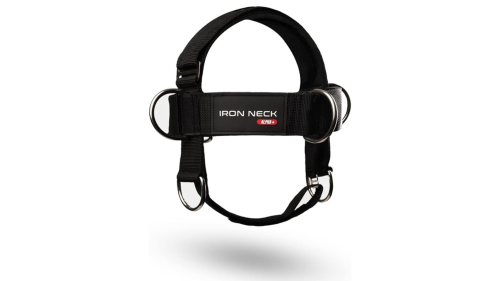First responders face a unique set of physical demands. Their duties can rapidly shift from routine response to high-intensity bursts that require strength, stamina, agility and flexibility.
Sudden explosive movements can be detrimental to a responder’s body if they’re not prepared for that type of functional movement. Personal trainers, physical therapists and health coaches are recognizing the limitations of traditional bodybuilding-style for responders and are switching their approach to tactical fitness. However, many of the tactical fitness programs overlook one key body part: the neck.
The uniqueness of back and neck for first responders
The neck and upper back support the head. Unlike other muscle groups, the neck lacks natural bony support, relying heavily on muscular strength and stability.
I love that most police agencies are using outer carriers instead of traditional under-the-uniform style ballistic vests. Officers can move equipment off their belts and on their vests, which is great for an officer’s lower back and hips. However, the weight of ballistic vests and required equipment adds additional stress to the neck and upper back, especially if the vest does not fit the officer properly.
Common back and neck injuries
First responders are at higher risk for developing certain back and neck injuries, including:
- Muscle strains and sprains: Lifting gear or patients, as well as sudden or forceful movement, like whiplash, can happen by simply turning your head too quickly. I remember when I was typing a long report in my car. I heard a noise outside my driver’s side window, twisted my head to look and pop, out went my neck.
- Disk herniation: When the cushioning between vertebrae bulges or ruptures, this can cause irreversible damage to your spine. Disk herniations happen in vehicle accidents, but also when the responder’s head is jarred when the neck is under tension.
- Cervical spondylosis: Degeneration of the cervical spine happens over years of repetitive stress, poor posture and even overuse of cellphones (called tech neck). Pay close attention to how your ballistic vests, gear and belts fit, how your upper back feels after a shift and if you have any shoulder pain.
Benefits of neck training
By incorporating neck training into a responder’s daily fitness routine, they can prevent injury, reduce pain and even improve physical performance on the street. Strong neck muscles can better absorb impact and stabilize the head, reducing the risk of strain and injury during lifting, falls or car accidents. Strengthening the neck muscles can help ease existing pain and prevent future discomfort while helping responders maintain proper posture, balance and agility during physical activity.
Note: All the pro football players and combat sports and martial artists know of the importance of neck training, which is why they incorporate neck training into their strength programs.
Looking to buy a neck trainer? Check out these choices.
Simple and effective neck training techniques
Neck training doesn’t require complex equipment or extensive gym time. Two to five minutes every other training session is all you need.
Warning: Start light and gradually increase volume and weight. Prioritize proper form over weight. If you experience any pain, stop. Go slow and always maintain control.
There are five main movements for your neck:
- Neck flexion (front)
- Neck extension (back)
- Side lateral flexion (side)
- Rotational
- Isometric holds (maintaining a neck position for a duration under tension)
Focus on one type of movement in each training session. Keep your reps around 20-50 starting with no weight then slowly add 2.5 pounds a session. Add isometric holds at the end for 20-30 seconds for an extra burn.
Here are some exercises you can easily integrate into your routine:
- Neck flexion (front of neck): Lay near the end of the bench facing up and let your head be suspended over the end of the bench. Bring your chin to your chest like you are exaggerating a head nod, then slowly move your head back like you are trying to touch the back of your head to your traps. This is a small range of motion so you will want to get the full range of motion.
- Side lateral (sides): Lay near the end of the bench on your side and let your head be suspended over the end of your bench. Let your head drop to the side then bring it back up to the starting location. Switch sides.
- Neck extension (back of neck): Lay near the end of the bench facing down and let your head be suspended over the end of the bench. Tuck your chin down to your chest then lift your head and try to look directly in front of you.
- Band-resisted neck rotations: Attach a band to a fixed object like a power rack. Then place your head inside the band with the band placed on your forehead. Step forward to apply light tension. Slowly rotate from side to side. If it is too easy, take a small step forward or switch to a different band.
Exercises with neck harnesses
If you want to do more weight or do these exercises standing, you will need a neck harness. If you currently have a neck harness, stop and ask these questions:
- Does the harness fit big/small? When you load the harness with weight, does the head strap cover your eyes?
- Does the harness have D-rings on the front, back and sides?
- Is the harness built with good-quality material?
You do not want to mess around with heavy weight on cheap equipment with your neck. Outside of doing neck exercises incorrectly, the second highest rate of injuries is from equipment failure. I purchased a cheap neck harness that lasted about 30 training sessions until a strap broke. When the strap broke, the weight fell to the ground, which caused my head to jolt upward. It was an extremely scary experience.
Choose a harness with several D-rings. Ideally, you will have at least one in the front, one in the back and one on each side. Avoid purchasing a harness with just two D-rings, as this will reduce its versatility. Front and back D-rings are great for isometric holds, sled pulls and neck slides (moving your head front and back while standing).
Get ready to train
Remember, your neck holds your head, which is an important part of your body. By prioritizing neck training, alongside other physical fitness activities, first responders can enhance their safety, performance and overall well-being, allowing them to serve their communities with greater confidence and endurance.

































